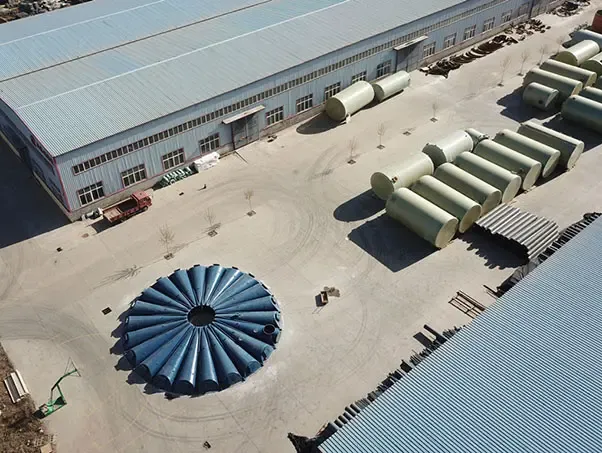
-
 Afrikaans
Afrikaans -
 Albanian
Albanian -
 Amharic
Amharic -
 Arabic
Arabic -
 Armenian
Armenian -
 Azerbaijani
Azerbaijani -
 Basque
Basque -
 Belarusian
Belarusian -
 Bengali
Bengali -
 Bosnian
Bosnian -
 Bulgarian
Bulgarian -
 Catalan
Catalan -
 Cebuano
Cebuano -
 China
China -
 China (Taiwan)
China (Taiwan) -
 Corsican
Corsican -
 Croatian
Croatian -
 Czech
Czech -
 Danish
Danish -
 Dutch
Dutch -
 English
English -
 Esperanto
Esperanto -
 Estonian
Estonian -
 Finnish
Finnish -
 French
French -
 Frisian
Frisian -
 Galician
Galician -
 Georgian
Georgian -
 German
German -
 Greek
Greek -
 Gujarati
Gujarati -
 Haitian Creole
Haitian Creole -
 hausa
hausa -
 hawaiian
hawaiian -
 Hebrew
Hebrew -
 Hindi
Hindi -
 Miao
Miao -
 Hungarian
Hungarian -
 Icelandic
Icelandic -
 igbo
igbo -
 Indonesian
Indonesian -
 irish
irish -
 Italian
Italian -
 Japanese
Japanese -
 Javanese
Javanese -
 Kannada
Kannada -
 kazakh
kazakh -
 Khmer
Khmer -
 Rwandese
Rwandese -
 Korean
Korean -
 Kurdish
Kurdish -
 Kyrgyz
Kyrgyz -
 Lao
Lao -
 Latin
Latin -
 Latvian
Latvian -
 Lithuanian
Lithuanian -
 Luxembourgish
Luxembourgish -
 Macedonian
Macedonian -
 Malgashi
Malgashi -
 Malay
Malay -
 Malayalam
Malayalam -
 Maltese
Maltese -
 Maori
Maori -
 Marathi
Marathi -
 Mongolian
Mongolian -
 Myanmar
Myanmar -
 Nepali
Nepali -
 Norwegian
Norwegian -
 Norwegian
Norwegian -
 Occitan
Occitan -
 Pashto
Pashto -
 Persian
Persian -
 Polish
Polish -
 Portuguese
Portuguese -
 Punjabi
Punjabi -
 Romanian
Romanian -
 Russian
Russian -
 Samoan
Samoan -
 Scottish Gaelic
Scottish Gaelic -
 Serbian
Serbian -
 Sesotho
Sesotho -
 Shona
Shona -
 Sindhi
Sindhi -
 Sinhala
Sinhala -
 Slovak
Slovak -
 Slovenian
Slovenian -
 Somali
Somali -
 Spanish
Spanish -
 Sundanese
Sundanese -
 Swahili
Swahili -
 Swedish
Swedish -
 Tagalog
Tagalog -
 Tajik
Tajik -
 Tamil
Tamil -
 Tatar
Tatar -
 Telugu
Telugu -
 Thai
Thai -
 Turkish
Turkish -
 Turkmen
Turkmen -
 Ukrainian
Ukrainian -
 Urdu
Urdu -
 Uighur
Uighur -
 Uzbek
Uzbek -
 Vietnamese
Vietnamese -
 Welsh
Welsh -
 Bantu
Bantu -
 Yiddish
Yiddish -
 Yoruba
Yoruba -
 Zulu
Zulu
Optimizing Flow Through Frp Weirs for Efficient Water Management Solutions
Understanding FRP Weirs Advantages and Applications
Fiber Reinforced Polymer (FRP) is becoming increasingly popular in various engineering and construction applications due to its superior properties, such as high strength-to-weight ratio, corrosion resistance, and design flexibility. One of the significant applications of FRP in hydraulic engineering is the construction of weirs. This article will delve into the concept of FRP weirs, their advantages, design considerations, and applications.
What is a Weir?
A weir is a barrier across a river or stream designed to alter the flow characteristics of water. Typically, weirs are used to manage water levels, measure flow rates, and improve water quality. They are constructed from various materials, including concrete, steel, and timber. However, with the advent of innovative materials like FRP, the design and construction of weirs have evolved to enhance performance, longevity, and efficiency.
The Advantages of FRP Weirs
1. Corrosion Resistance One of the most significant benefits of FRP weirs is their resistance to corrosion. Traditional materials such as steel and concrete can deteriorate over time due to exposure to harsh environmental conditions, including moisture, chemicals, and biological factors. FRP does not corrode, ensuring a longer lifespan with reduced maintenance costs.
2. Lightweight FRP is significantly lighter than conventional materials. This characteristic allows for easier transportation and installation, reducing labor costs and time. The lightweight nature also minimizes the structural support requirements, which can be particularly beneficial in delicate ecosystems or in areas with limited access.
3. High Strength and Durability Despite its light weight, FRP offers excellent tensile strength and impact resistance. This makes FRP weirs particularly suitable for areas that experience significant water flow or potential debris impact, ensuring that the structure remains intact and functional over time.
4. Design Flexibility The fabrication process of FRP allows for a wide range of shapes and sizes to be engineered to meet specific site requirements. This flexibility facilitates the design of weirs that not only meet functional needs but can also be aesthetically pleasing, blending seamlessly with the environment.
5. Reduced Environmental Impact FRP materials can be designed and manufactured with lower environmental footprints compared to traditional materials. Additionally, the durability and corrosion resistance of FRP weirs lead to less frequent replacements and repairs, further reducing overall environmental impact.
frp weir

Design Considerations for FRP Weirs
When designing FRP weirs, engineers must consider several factors to ensure optimal performance
- Hydraulic Performance The weir must be designed to manage the expected flow rates and water levels effectively. Engineers use hydraulic models to predict how water will interact with the weir, ensuring it meets regulatory requirements and operational objectives.
- Material Specifications Selecting the right type of FRP resin and reinforcement (such as glass or carbon fiber) is critical for achieving the desired mechanical properties and environmental resistance.
- Site Conditions The geographical and environmental conditions of the installation site will influence the design, including temperature fluctuations, potential for flooding, and sediment accumulation.
- Maintenance and Monitoring Although FRP weirs are low-maintenance, periodic inspections can help identify any issues that may arise over time, ensuring continued functionality.
Applications of FRP Weirs
FRP weirs are increasingly utilized in various projects, including
- Water Resource Management They are effective in controlling water levels in reservoirs and managing irrigation systems. - Environmental Restoration FRP weirs can minimize erosion, improve fish passages, and protect sensitive habitats. - Hydropower Generation Used in energy generation facilities, FRP weirs can optimize flow rates for turbine efficiency. - Urban Drainage Systems In municipal settings, FRP weirs help manage stormwater runoff and prevent flooding.
In conclusion, FRP weirs represent a significant advancement in hydraulic engineering. Their unique benefits, such as corrosion resistance, lightweight design, and high durability, combined with their versatility for various applications, make them an ideal choice for modern water management solutions. As the demand for sustainable and resilient infrastructure grows, the role of FRP technology in the construction of weirs will likely continue to expand.









